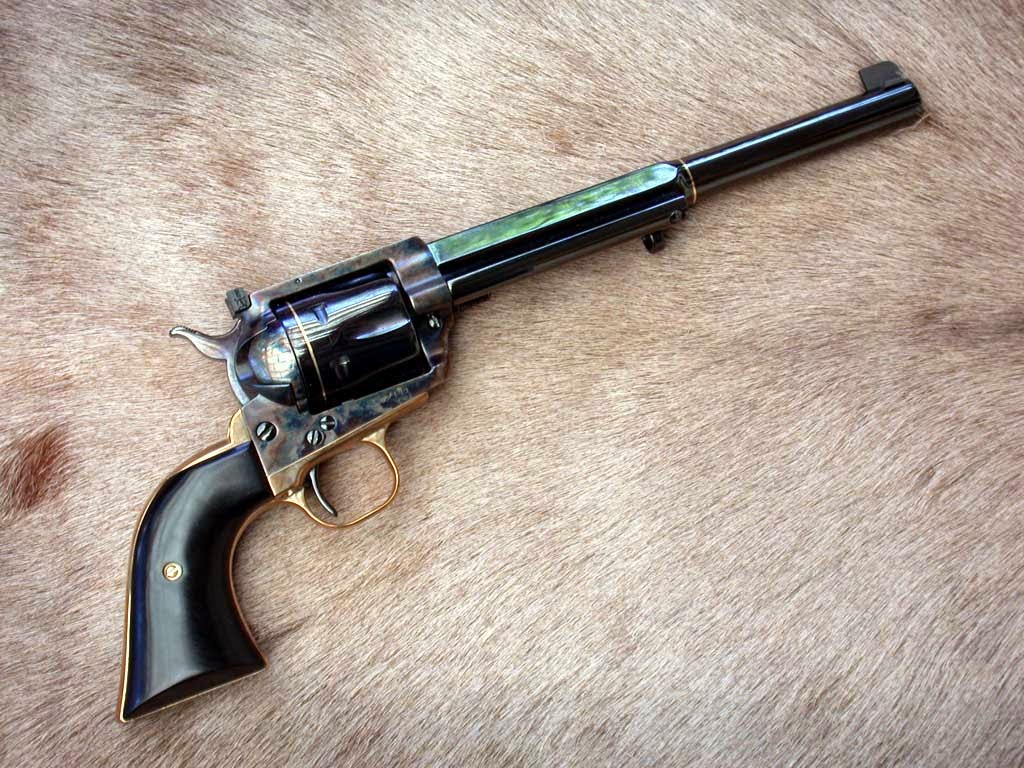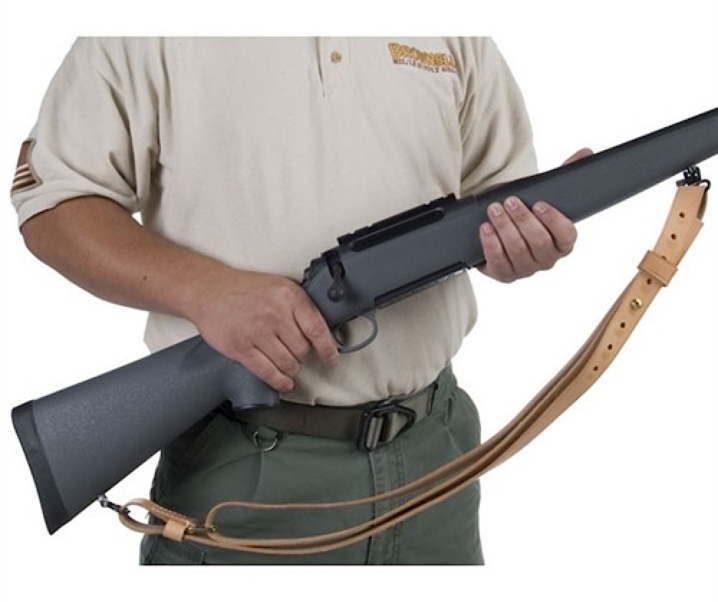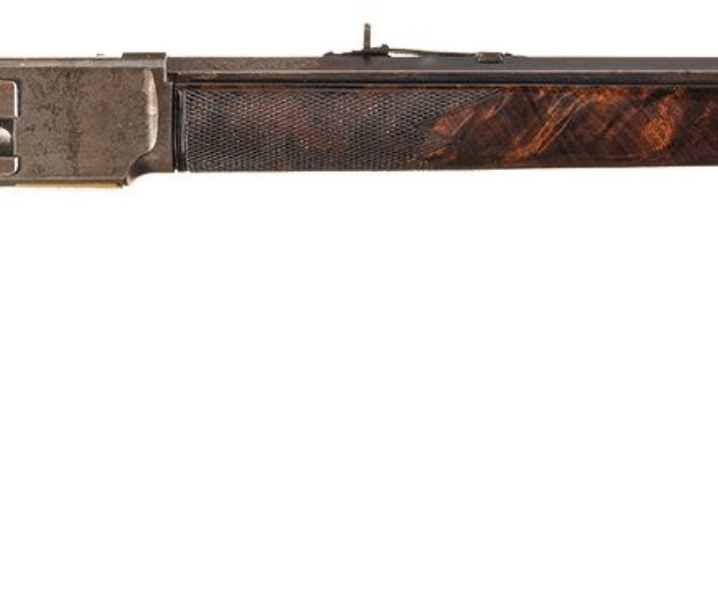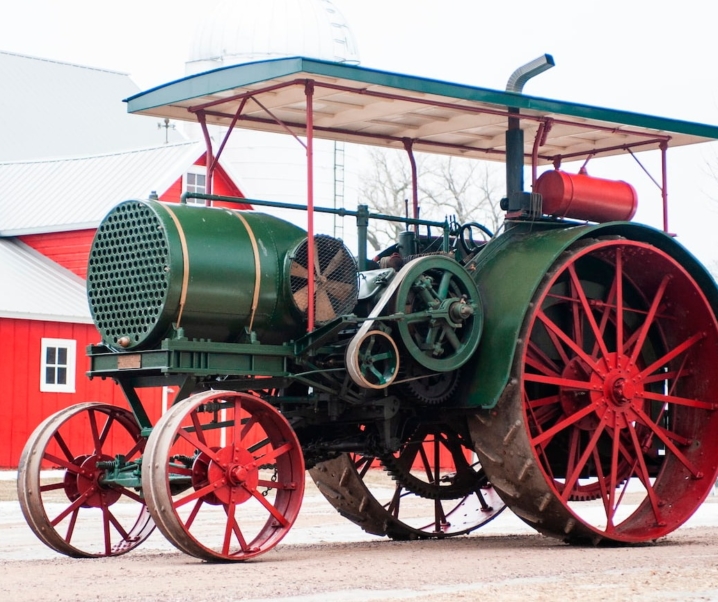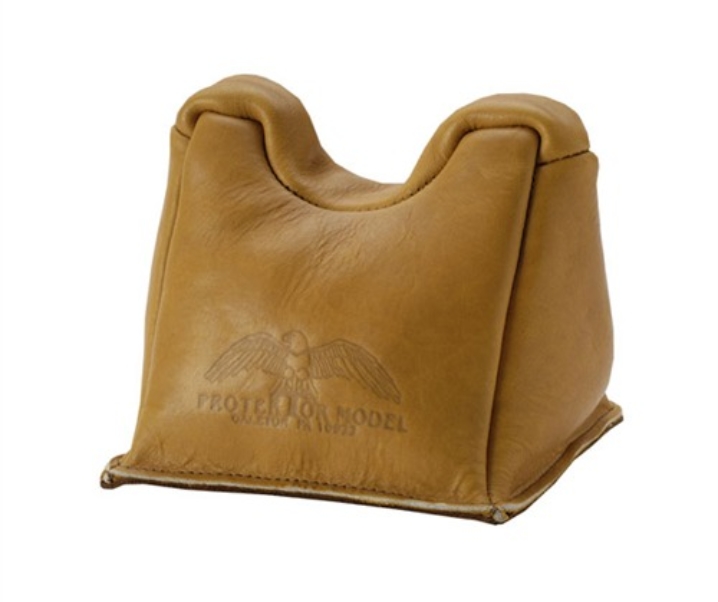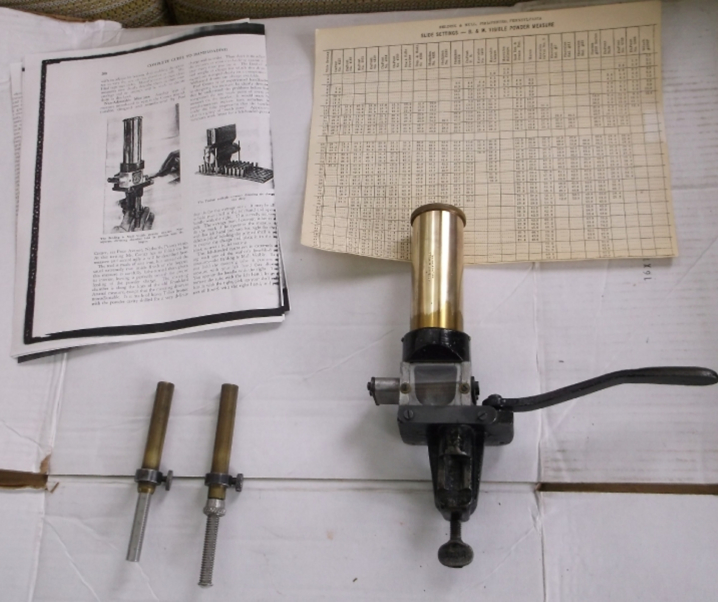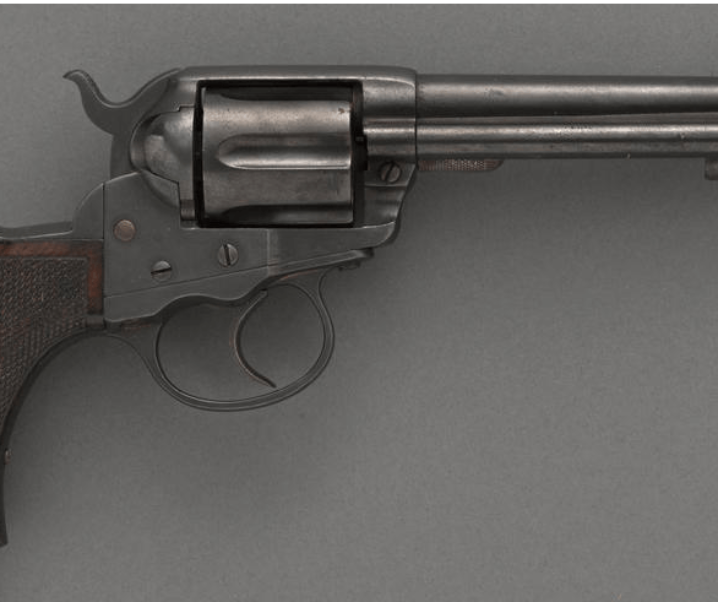Background
The best things are created by people who are passionate about the thing they are setting out to make, not about whether or not it will sell well. So, to understand the underlying reason for Bill Ruger to introduce the single-action Ruger Blackhawk back in 1955 is best done by considering the things that Bill Ruger was passionate about: Bill Ruger was passionate about classic guns, and classic cars, he had a penchant for vintage Stutz automobiles especially, and was friendly with British riflemaker David Lloyd whose work he greatly respected. In many ways Bill Ruger was a bit like Sir William Lyons who founded the Jaguar automobile company and had his hand on the design of every car that Jaguar made whilst under his leadership. Bill Ruger was involved in the design of every firearm Ruger made and was a calculated risk taker in his choice of the types of firearms Ruger would bring to market. His Ruger Model 77 was a classic design with heavy David Lloyd influences, his Ruger No. 1 falling-block single-shot rifle was the sort of Farquharson inspired classic that a London “best gun” maker might create and sell for astronomical amounts of money: Bill Ruger made it brilliant, gorgeous and affordable. Bill Ruger was also a man who loved 19th century Western American art, so it comes as no surprise that he would decide to create single-action revolvers in the style of the Colt Single Action Army but with twentieth century improvements. He decided to do this at a time when Colt had withdrawn their original Colt single action from production after the end of the Second World War thinking that no-one would want such an old fashioned revolver anymore.
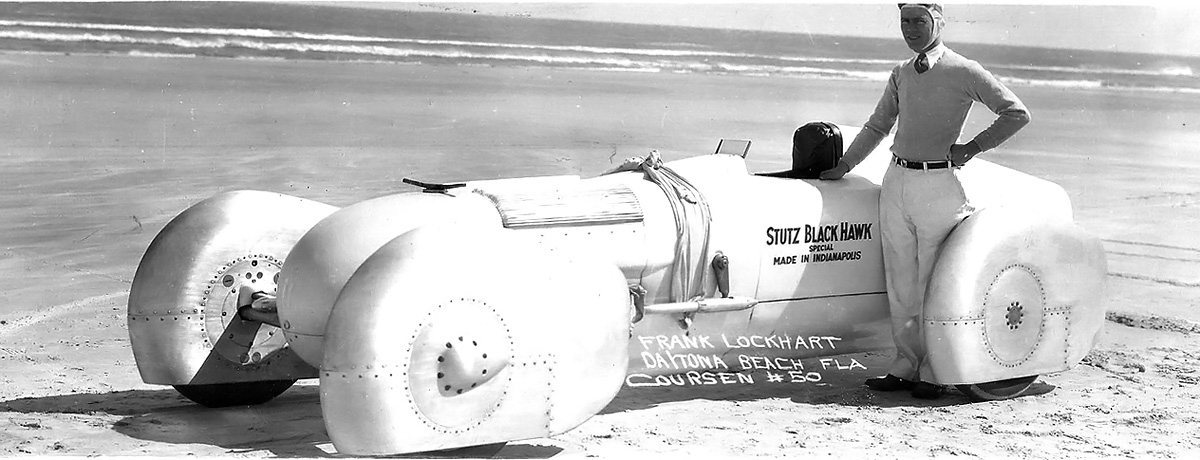
The Three Screw “Flattop” Blackhawk
The original Ruger Blackhawk entered production in 1955 after Bill Ruger had wisely tested the market with his first “Wild West” single-action revolver, the .22 rimfire caliber Single Six. The Single Six proved the idea for a centerfire cowboy style revolver was viable and so the design team at Ruger got working on building a revolver that would be externally just like the Colt SAA of 1873, but with a frame mounted firing pin and modern coil spring internals, so that the revolver would have the same look, sounds and feel, but which would work better. This model produced the same four clicks on cocking as the classic Colt SAA, and to load it the hammer had to be placed on half cock before the loading gate could be opened.
This first generation of Ruger Blackhawk revolvers were made in .357 Magnum which was also a wise move: the .357 Magnum cartridge had made a name for itself both in the power and accuracy departments and had become a popular cartridge both with sporting shooters and police departments worldwide. When the .357 Magnum was first put into production demand was soon heard for a revolver with adjustable sights to bring out the full potential of the cartridge and at that time Smith & Wesson had obligingly listened to consumer requests and fitted their revolver with excellent adjustable sights. Bill Ruger followed suit and, ignoring the temptation to make a faithful clone of the Colt SAA, he gave the new Blackhawk revolver a flat action top and adjustable sights, with a well designed front sight.
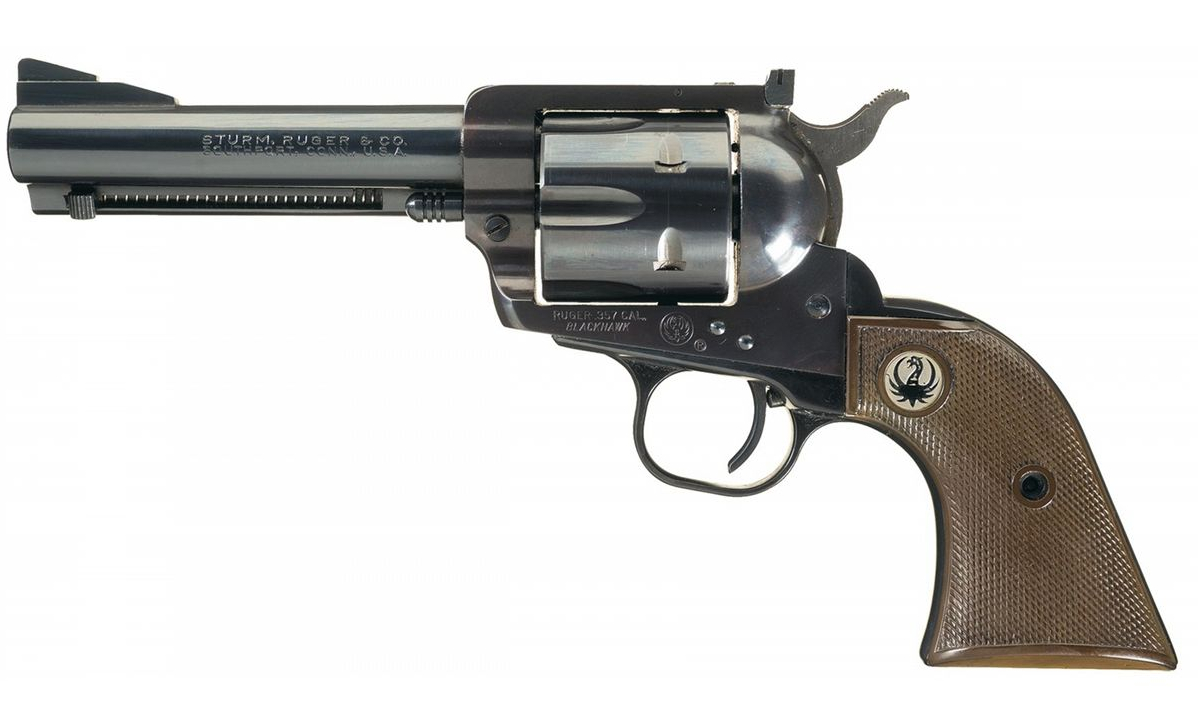
The year after Ruger had introduced the Blackhawk was to be a momentous one in the annals of revolver cartridges, it was the year Remington introduced the .44 Remington Magnum. The .44 Magnum was a much anticipated cartridge: Elmer Keith had been doing a lot of experimentation with hot loads for the .44 Special and his work was well known. You didn’t need a crystal ball to predict what a new powerful .44 revolver cartridge would likely look like: someone with even a modicum of Sherlock Holmes’ deductive abilities could have told you what to expect before Remington’s release of the cartridge. Given that the .357 Remington Magnum was created simply by lengthening the .38 Special case by .125″ and loading the new cartridge to higher pressures. It was known that Smith & Wesson had been working on a new higher powered .44 revolver cartridge to make a revolver into a genuine big game hunting arm. So Sherlock Holmes would have told Doctor Watson that the new .44 cartridge would simply be the .44 Special lengthened by .125″ and loaded to the highest pressures that a new Smith & Wesson revolver could safely stand, “elementary my dear Watson”. There are various stories that verge on urban legend of how a Ruger employee mysteriously came into possession of a fired .44 Magnum case and that find enabled Ruger to get busy making their Blackhawk to fire the new cartridge. But in truth one simply needed to have one’s finger on the pulse of what was going on to figure out what the .44 Remington Magnum was going to be, and when it would be released. Remington released the .44 Magnum in December 1955 and the first to bring a .44 Magnum revolver to market was Ruger, and that revolver was the Ruger Super Blackhawk.
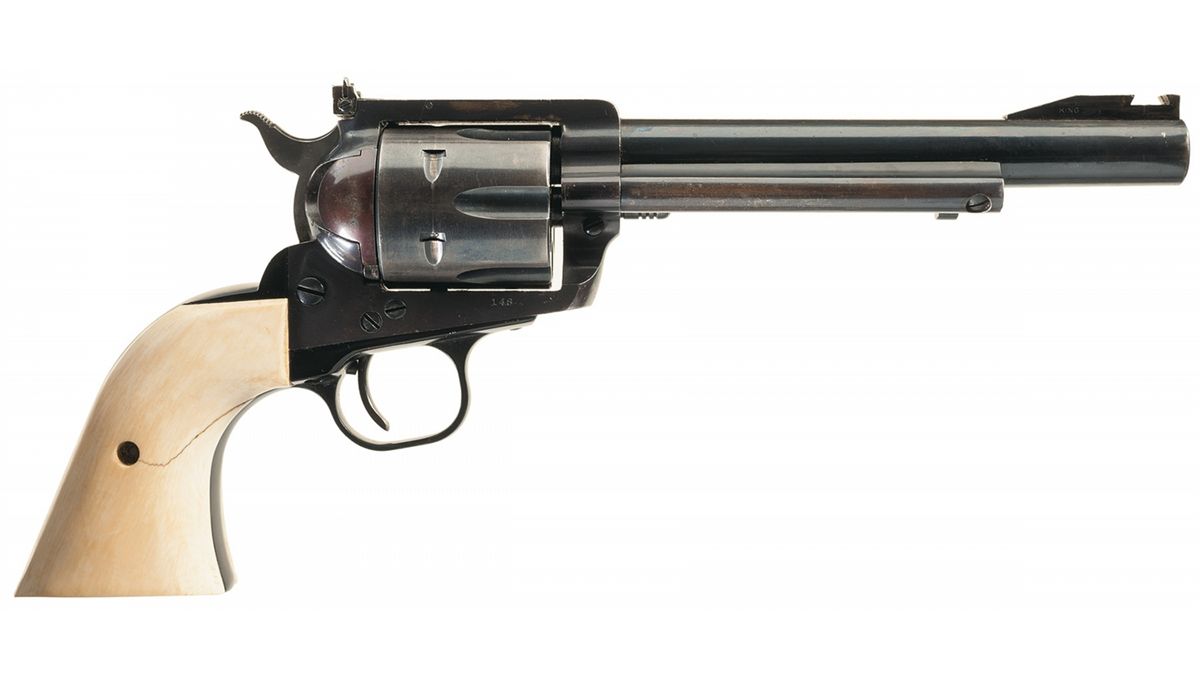
The Three Screw “Old Model” Blackhawk
The .44 Remington Magnum version of the Blackhawk was made on a larger frame to accommodate the more powerful cartridge but was otherwise a beefed up version of the .357 Magnum version and it was called the Super Blackhawk. The design of both .357 Magnum and .44 Magnum versions remained unchanged until 1962 when Ruger decided to add “ears” to the frame to provide protection for the rear sight. This design change was quite probably inspired by Elmer Keith’s suggestion in his book Sixguns, which was first published in 1955, and the revised edition in 1961. In addition to the “ears” the grip was increased in size to make the Super Blackhawk more pleasant to shoot.
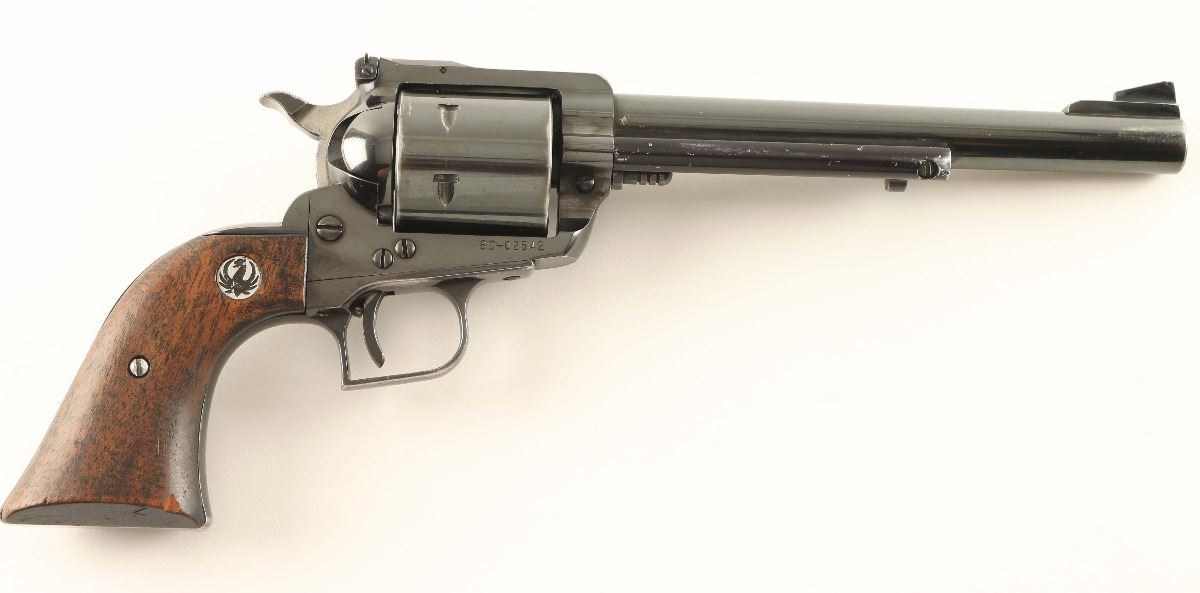
Sales of the Ruger Super Blackhawk in .44 Remington Magnum were good as were sales for Smith & Wesson’s Model 29. The Ruger revolver was a tad less expensive but was beautifully made and those factors helped ensure its success. The Blackhawk’s plow-handle grip was also good for taming the recoil of the big .44 Magnum allowing the revolver to turn in the hand putting the pistol in a good position for the shooter to thumb back the hammer as he/she rolled the revolver forward ready for the next shot. Back in the mid-late 1950’s few shooters were familiar with the degree of bang and belt that a .44 Magnum deals out and so neither the Ruger Blackhawk in .44 Magnum nor the Smith & Wesson Model 29 sold like hotcakes. The breakthrough would happen when the 1971 movie “Dirty Harry” made the Smith & Wesson Model 29 a household name and the “Dirty Harry” revolver would become such a “must have” item that it took Smith & Wesson years to catch up on all the orders. This also worked well for Ruger because those who could not get their hot little hands on a Model 29 would often buy a Ruger Super Blackhawk instead.
Not only did Ruger make the Blackhawk in .357 Magnum but in the following years made models in .30 Carbine, .41 Magnum and .45 Colt. Given that the Blackhawk in .357 Magnum could quite happily digest a diet of .38 Special cartridges, and a hand-bruising ear-splitting .44 Magnum Super Blackhawk could be turned into a mild mannered revolver by feeding it .44 Special ammo, we can see that these revolvers were very adaptable. With its micrometer adjustable sights and excellent single action trigger the Ruger Blackhawk in .357 Magnum became quite popular for the ISSF Center Fire pistol match, most competitors using .38 Special “Mid-range” wadcutter ammunition.
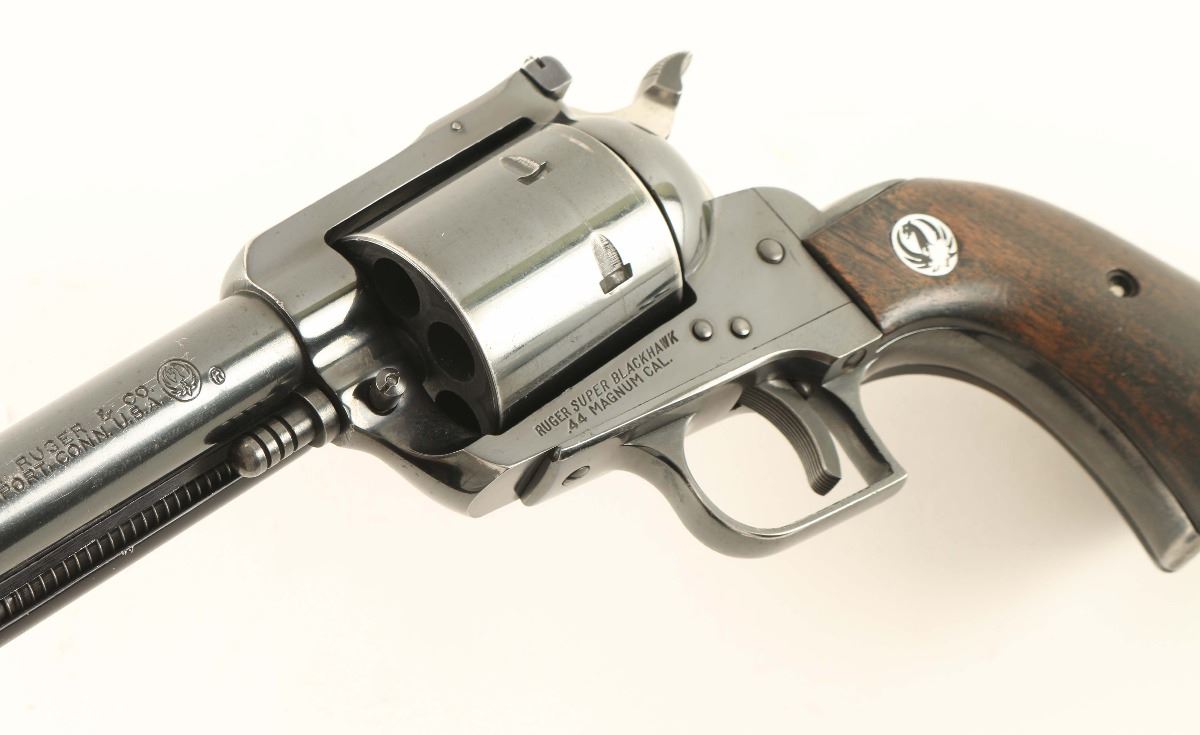
The New Model Blackhawk
By 1972 Ruger had been re-considering the design of the Blackhawk and had decided to address the two glaring shortcomings of the original Colt SAA 1873 design. The first of these issues was that in order to load/unload the revolver it had to first be placed on half cock. This means there was a potential, albeit small, for the hammer to fall on a live cartridge during loading possibly resulting in an unintended discharge. The second issue was that the revolver could not be safely carried with six rounds in the cylinder. To load six would mean that with the hammer un-cocked the firing pin would be resting on the primer of a live cartridge. It does not take much of a blow on the un-cocked hammer to cause the cartridge to go off, it can be demonstrated by tapping the hammer with a piece of wood. (Note: If you would like to test this for yourself we strongly recommend you do it with a primed empty case, not a loaded cartridge. Also be aware that a primer on its own still creates a hot flash at the muzzle that can cause injury, so make sure the revolver is pointed at something safe, like a bucket of sand, or downrange at the shooting range). So a “six shooter” wasn’t, it was a “five shooter”. But Bill Ruger was about to fix that problem with his New Model Blackhawk.

The New Model Blackhawk was a complete departure from the original Colt SAA design. The new model featured a transfer bar safety system that incorporated a transfer bar that was kept in a retracted position unless the trigger was pulled. In order for the revolver to be fired the hammer had to be cocked, and then the trigger had to be pressed, which caused the transfer bar to move into position over the firing pin. This filled the gap between the hammer and the firing pin enabling the hammer blow to be transferred via the transfer bar to the firing pin. If the trigger was not pulled but the hammer fell there was a gap between the hammer face and firing pin so the revolver could not accidentally fire. With this system the revolver could be safely carried with all six chambers loaded.
In addition to the transfer bar safety system the design team at Ruger made the New Model Blackhawk so that it did not need to be placed in half-cock in order to open the loading gate for loading/unloading. Reloading was done with the hammer down, and with the loading gate interlock the transfer bar was withdrawn, removing the likelihood of an unintended discharge.
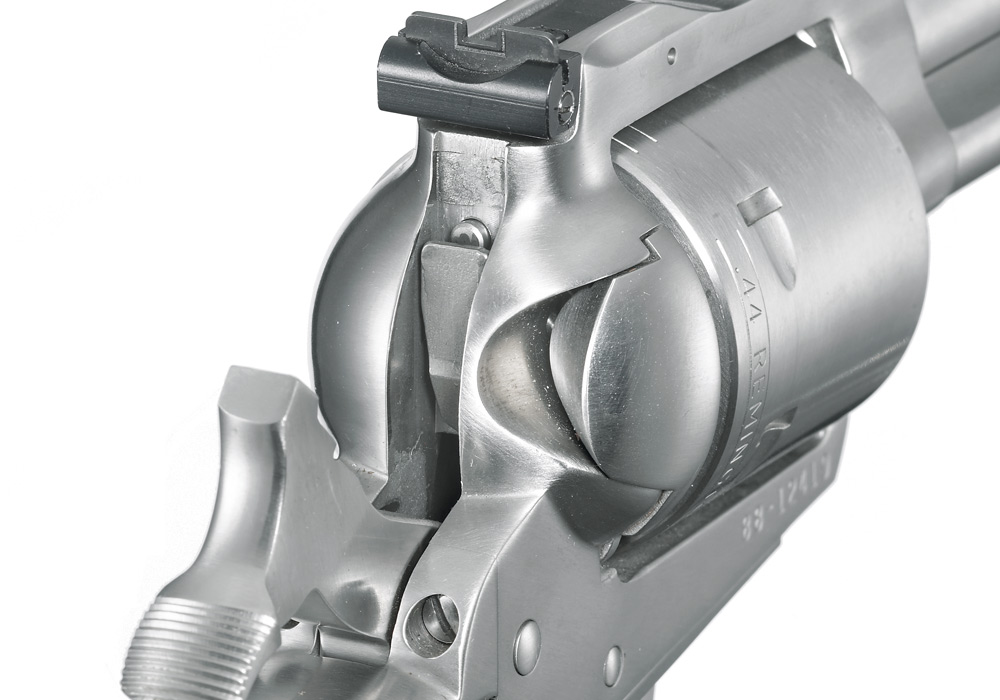
Not only did Ruger provide these safety features on the New Model Blackhawk but they also offered to convert Old Model Blackhawks to the new transfer bar system. Although this may seem like a good idea the resulting conversion did not perform as well as hoped, making the action feel somewhat awkward and similarly making the excellent Ruger trigger mediocre. A good pistol-smith is able to make the converted revolver much improved, but many who opted for the conversion decided to revert their revolver back to its original specification. Whether or not a three screw revolver has been converted, or converted back to original specification is important to collectors. A three screw Ruger Blackhawk that is original is worth more than one that has been converted to the transfer bar system, or converted back again. It is easy enough to check whether or not a three screw Blackhawk has been converted, you simply cock the revolver and look for a transfer bar. It is also not difficult to check if a three screw revolver has been converted and then changed back again. Remove the grip frame and look at the bottom of the frame: if there is an “R” stamped there it means the revolver was converted by Ruger at one time. If it has the “R” stamp its collector value is lower, although it will still be a great revolver to use and enjoy.
Although the New Model Blackhawk was a great advance because of its mechanism there was one change that some did not like. Ruger decided to only make the New Model Blackhawk and Super Blackhawk in one frame size. No doubt this simplified the manufacturing process, but for those wanting a .357 Magnum or similar revolver in the smaller sized frame like the Original Colt SAA were disappointed, whereas the Old Model Blackhawk in .357 Magnum would fit a holster designed for the Colt SAA the New Model Blackhawk would not. On the bright side however was that Ruger made the New Model Blackhawk in a quite large range of calibers including the .30 Carbine, and .45 Colt, and also introduced convertible models with interchangeable cylinders for .357 Magnum/9mm Parabellum, and .45 Colt/.45 ACP. This sort of adaptability captured the imaginations of many shooters and kept Ruger revolver sales in good shape.
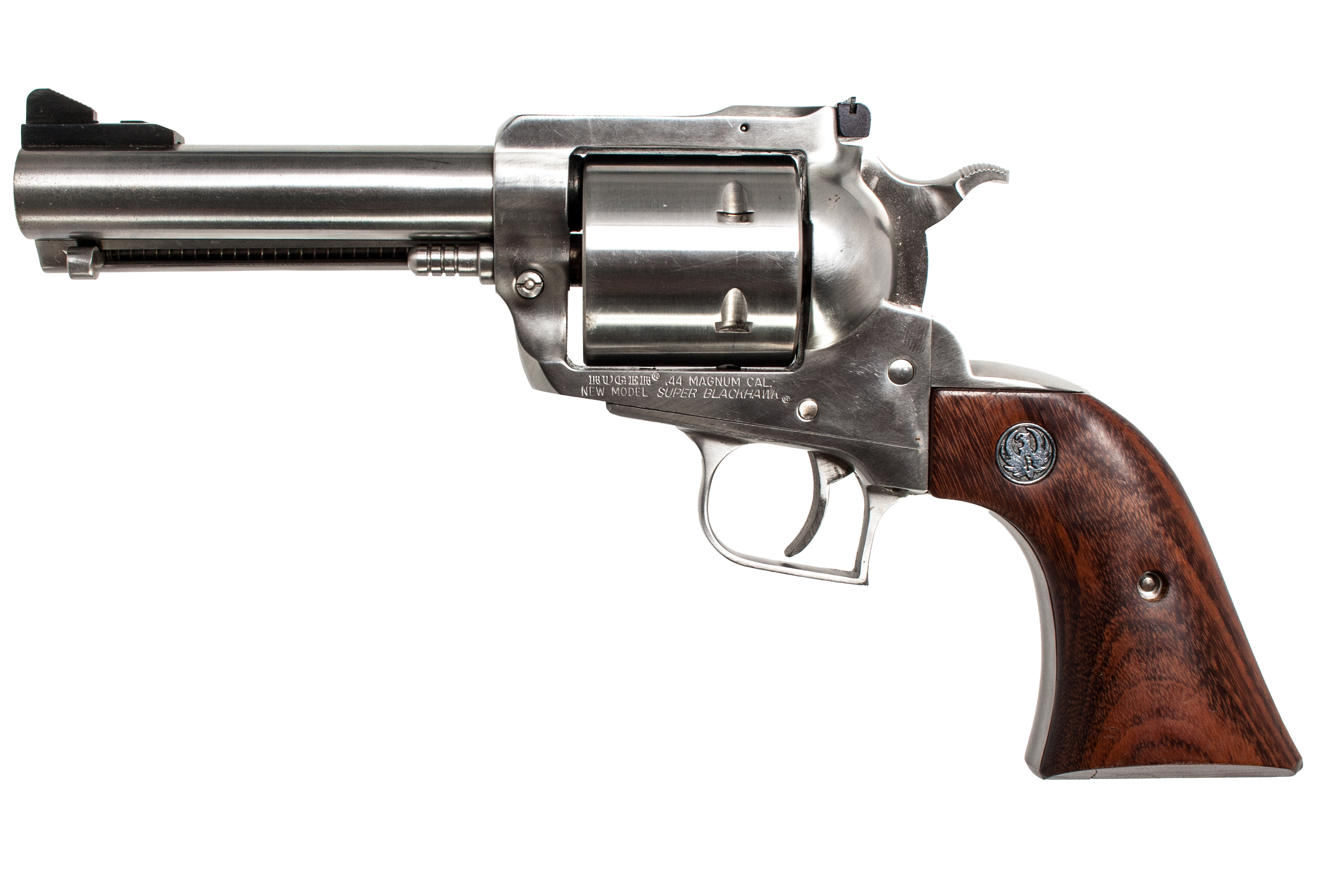
The Current Product Line-Up
The New Model Ruger Blackhawk and Super Blackhawk have remained in production over the decades with only detail changes and improvements. The New Model Blackhawk is made in four variants; the Blued, Convertible, Stainless and Bisley. In addition to this are the Ruger special models made for such distributors such as Williams Shooters Supply, Talo, Lipsey’s, and Gallery of Guns.
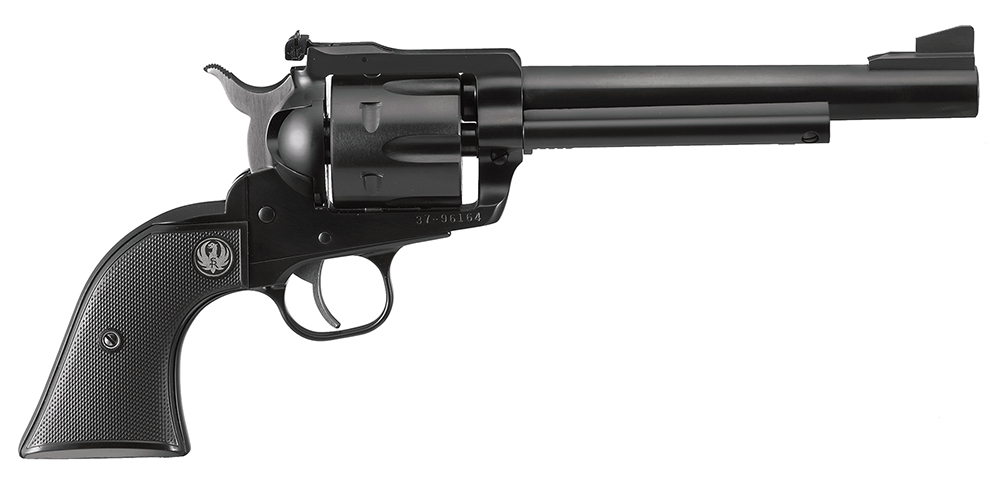
The Ruger Blackhawk Blued model is available in .357 Magnum and .41 Magnum with choice of 4.62″ or 6.5″ barrel, and 45 Colt with choice of 4.62″, 5.5″ or 7.5″ barrel. There is also a .30 Carbine model which only has a 7.5″ barrel.
The Blackhawk Convertible is made in .357 Magnum/9mm Parabellum with either 4.62″ or 6.5″ barrels, or in .45 Colt/.45 ACP with either 4.62″ or 5.5″ barrel.
The Blackhawk Stainless is made in .357 Magnum with either 4.62″ or 6.5″ barrel.
The Blackhawk Bisley is only made in special versions for specific distributors; Williams Shooters Supply, Talo, and Lipsey’s
The Ruger Super Blackhawk is made in Blued, Stainless and Bisley versions chambered for the .44 Remington Magnum. There are models featuring either the dragoon or standard trigger guard and in barrel lengths 4.62″, 5.5″, 7.5″ and 10.5″. In addition to this is the Hunter model fitted for optical sights with a 7.5″ barrel and the choice of chambering in either the .44 Magnum or .41 Magnum. The last model in the Super Blackhawk line-up is the Bisley Hunter with a more upright grip, 7.5″ barrel, and .44 Magnum chambering.
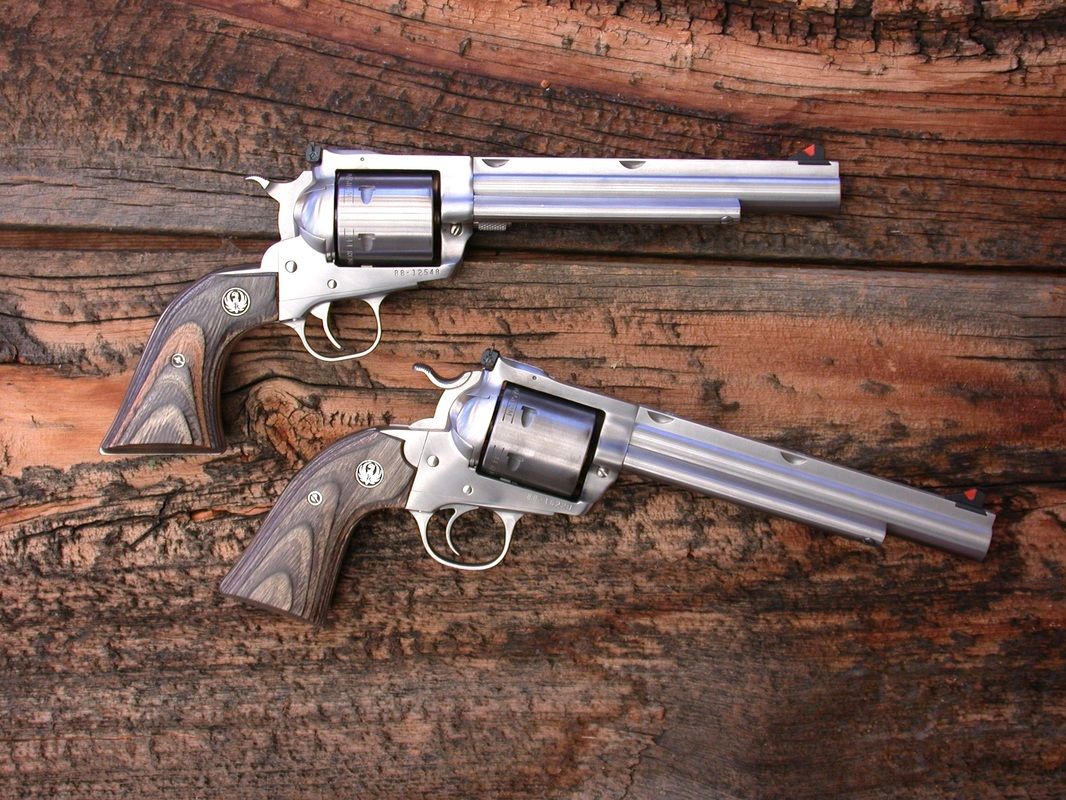
Conclusion
The Ruger Blackhawk and Super Blackhawk stand out as one of the great revolver designs of the twentieth century. They have a very strong action and feature an excellent trigger. This was a revolver that not only resurrected one of “the guns that won the West” but also improved on it in ways that Samuel Colt would have approved of: becoming the revolver he would have liked to have made if the technology had been available to him back in 1873. These revolvers are also a great starting point for a custom revolver and can be made into quite astoundingly gorgeous guns.
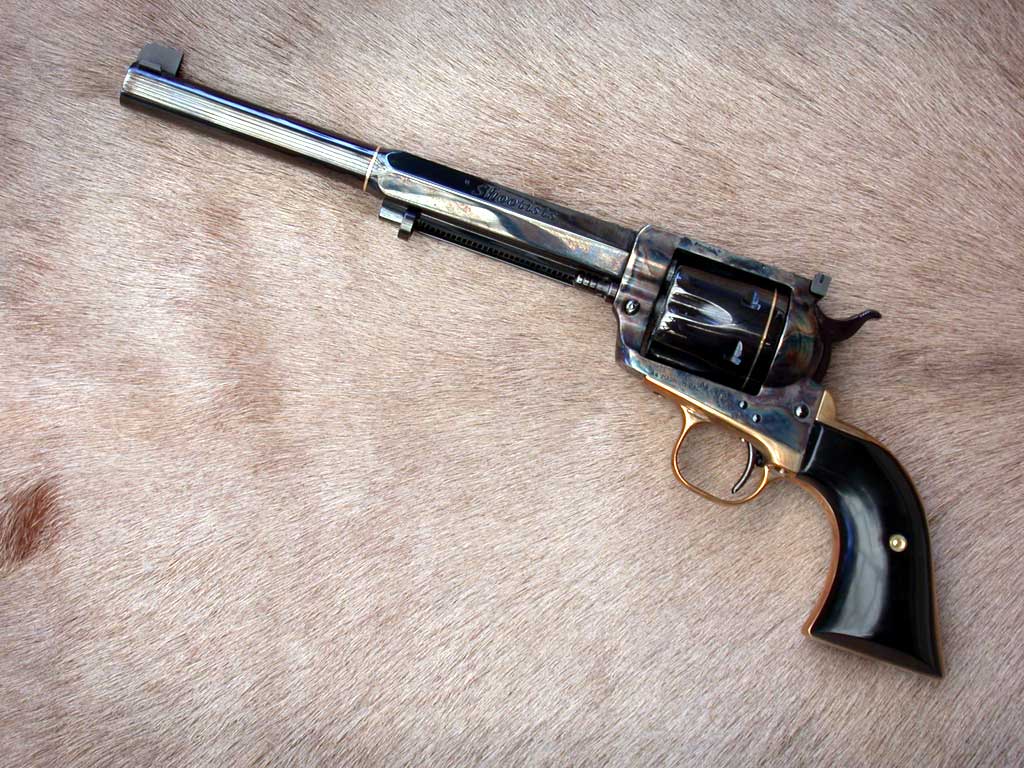
As an example of what can be done with a Ruger Blackhawk or Super Blackhawk is the custom work pictured above. This revolver was custom made by Milton Morrison of Qualite’ Pistol & Revolver in Colorado for The Shootists organization. It features a custom brass frame by Qualite’ Pistol & Revolver and a nine and a half inch half octagon barrel. Complimenting the revolver’s case hardened frame is the cylinder and barrel finished in Milt’s “Black Diamond” blue finish. You will find mention of this revolver at gunblast.com.
Whether you are planning on keeping your Ruger Blackhawk standard or doing some custom work on one to truly personalize it these are a wise choice for a single action revolver buyer. Bill Ruger was passionate about the firearms he created and the Blackhawk is one of his greatest designs.

Jon Branch is the founder and senior editor of Revivaler and has written a significant number of articles for various publications including official Buying Guides for eBay, classic car articles for Hagerty, magazine articles for both the Australian Shooters Journal and the Australian Shooter, and he’s a long time contributor to Silodrome.
Jon has done radio, television, magazine and newspaper interviews on various issues, and has traveled extensively, having lived in Britain, Australia, China and Hong Kong. His travels have taken him to Indonesia, Israel, Italy, Japan and a number of other countries. He has studied the Japanese sword arts and has a long history of involvement in the shooting sports, which has included authoring submissions to government on various firearms related issues and assisting in the design and establishment of shooting ranges.

